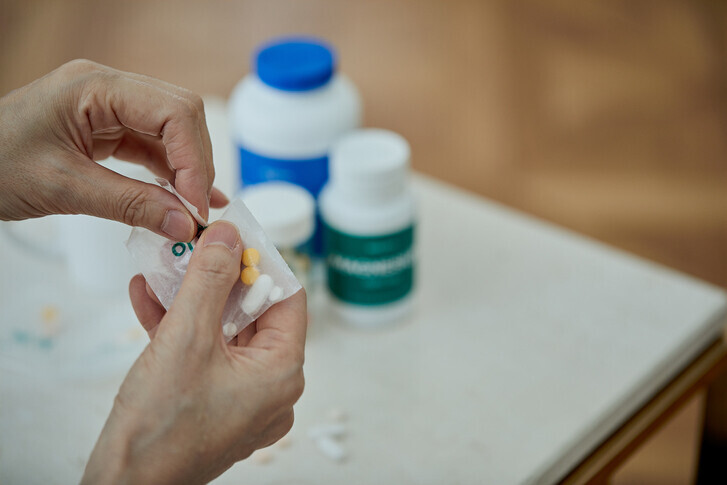hankyoreh
Links to other country sites 다른 나라 사이트 링크
S. Korea aims to reduce human antibiotic usage 20% by 2025

As of 2019, human antibiotic use in South Korea was the third highest among Organisation for Economic Co-operation and Development (OECD) member states. The government is pushing for a 20% reduction of human antibiotic usage and a 10% reduction of sales of nonhuman antibiotics (for use in livestock and fish) by 2025. The move is aimed at protecting the public from bacteria that are resistant to antibiotics.
These goals are part of Korea’s second antibiotic resistance management plan, which the Ministry of Health and Welfare announced on Sunday it had drawn up with related ministries following approval from a panel of experts on antibiotic resistance and the Infectious Disease Management Committee.
Korea’s goals are to reduce antibiotic usage from the current level of 26.1 DID (defined daily doses per 1,000 inhabitants per day) to 20.9 DID — a decrease of 20% — and to reduce the amount of nonhuman antibiotic usage from 217 milligrams per kilogram of livestock (in PCU, or population correction units) per year to 195 mg — a decrease of 10% — by 2025.
The Ministry of Health and Welfare explained that Korea’s human antibiotic usage of 26.1 DID as of 2019 was the third highest in the OECD. Other countries are considerably lower: Ireland stands at 21.7 DID, Finland at 14.7 DID, and the Netherlands at 9.5 DID. A 2017 study in the journal Science found that Korea’s antibiotic dosage in livestock (188 mg per PCU) ranged from 140% to 570% higher than major countries such as Japan (78 mg) and Denmark (28 mg).
By Lee Jae-ho, staff reporter
Please direct questions or comments to [english@hani.co.kr]

Editorial・opinion
![[Column] Life on our Trisolaris [Column] Life on our Trisolaris](https://flexible.img.hani.co.kr/flexible/normal/500/300/imgdb/original/2024/0505/4817148682278544.jpg) [Column] Life on our Trisolaris
[Column] Life on our Trisolaris![[Editorial] Penalties for airing allegations against Korea’s first lady endanger free press [Editorial] Penalties for airing allegations against Korea’s first lady endanger free press](https://flexible.img.hani.co.kr/flexible/normal/500/300/imgdb/original/2024/0502/1817146398095106.jpg) [Editorial] Penalties for airing allegations against Korea’s first lady endanger free press
[Editorial] Penalties for airing allegations against Korea’s first lady endanger free press- [Editorial] Yoon must halt procurement of SM-3 interceptor missiles
- [Guest essay] Maybe Korea’s rapid population decline is an opportunity, not a crisis
- [Column] Can Yoon steer diplomacy with Russia, China back on track?
- [Column] Season 2 of special prosecutor probe may be coming to Korea soon
- [Column] Park Geun-hye déjà vu in Yoon Suk-yeol
- [Editorial] New weight of N. Korea’s nuclear threats makes dialogue all the more urgent
- [Guest essay] The real reason Korea’s new right wants to dub Rhee a founding father
- [Column] ‘Choson’: Is it time we start referring to N. Korea in its own terms?
Most viewed articles
- 1New sex-ed guidelines forbid teaching about homosexuality
- 260% of young Koreans see no need to have kids after marriage
- 3[Column] Life on our Trisolaris
- 4OECD upgrades Korea’s growth forecast from 2.2% to 2.6%
- 5Presidential office warns of veto in response to opposition passing special counsel probe act
- 6Months and months of overdue wages are pushing migrant workers in Korea into debt
- 7[Guest essay] Maybe Korea’s rapid population decline is an opportunity, not a crisis
- 8[Editorial] Penalties for airing allegations against Korea’s first lady endanger free press
- 9[Reportage] On US campuses, student risk arrest as they call for divestment from Israel
- 10Korea sees more deaths than births for 52nd consecutive month in February